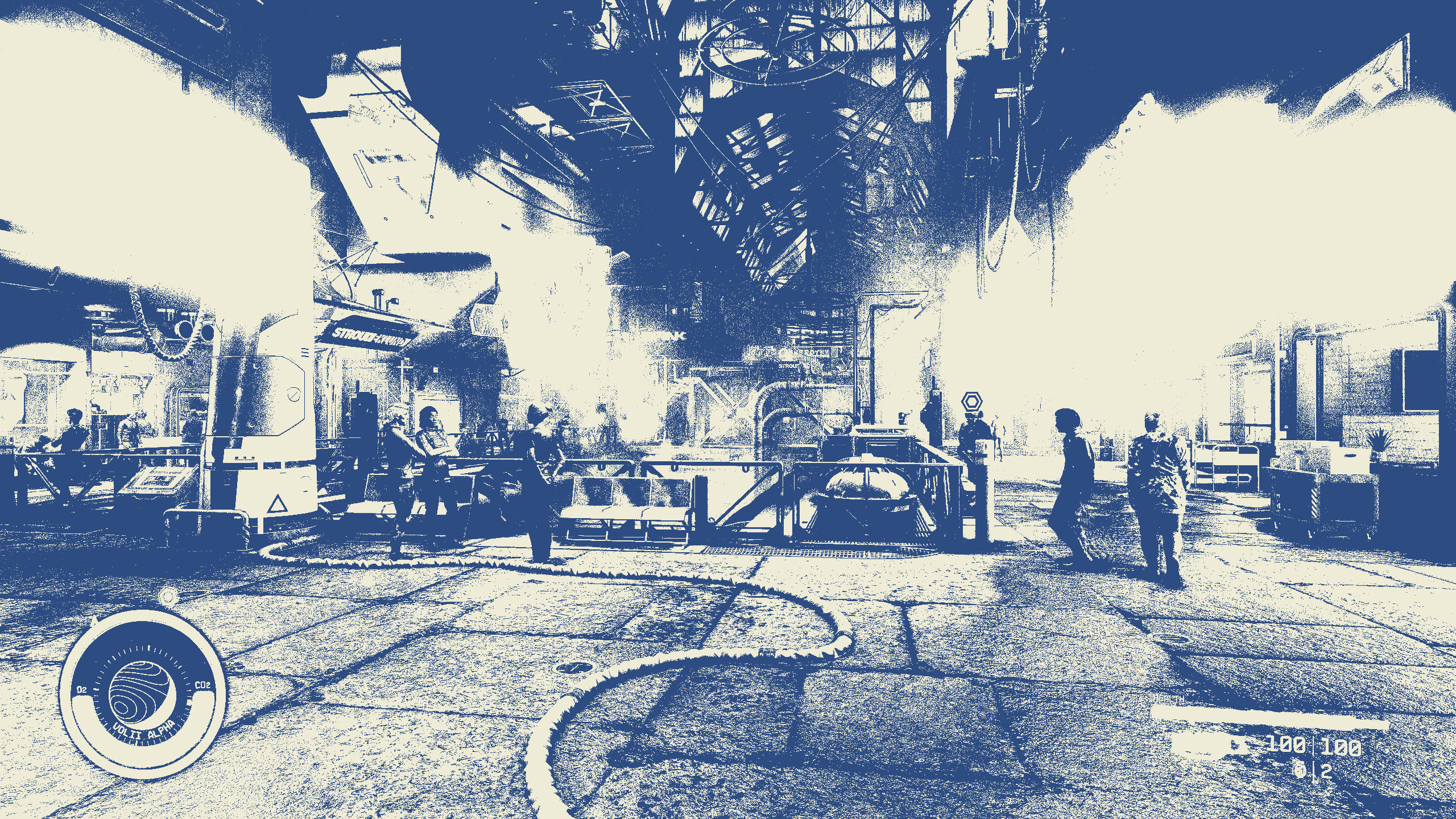
This article discusses plot details from throughout Starfield.
The main faction in Starfield, Constellation, is introduced as a bunch of explorers; a small group who go out into undiscovered space and see what they can find. “Who does that anymore?” asks fellow miner, Heller. We learn through him that most people in this world consider the mapping of the galaxy over and done with. Even if it’s not yet comprehensive, they have quite enough to deal with on the planets they’ve already colonised.
Constellation disagrees. They tell you that they’re the ones who “look up at the stars and imagine what’s out there.” It transpires that this dozen or so people are the sole inheritors of one of the most notably ancient and long-lived human instincts there is. As the player, a modern person in a world where enchantment is not quite dead, you’re already on their side. More than that, you’re already positioned as one of the special few who can connect to this apparently lost wonder.
Bethesda making Constellation universally relatable is a smart trick, given that they’re the group you need to stick with for the main plot. Other factions can be divisive; not Constellation. But creating a world where wonder is actually a rare feeling ends up making Starfield a game where changing attitudes towards real world spacefaring meet the current AAA game’s focus on player autonomy, as most keenly distilled by none other than Bethesda.
When Kennedy made his famous We choose to go to the moon speech in 1962, he claimed that it was for “the progress of all people.” Although obviously positioning the US against the USSR in its Cold War context, the message was that space “deserves the best of all mankind”—study, understanding, and peace. Propaganda, but propaganda that tells us something about the image that the Western space race was intended to project.
The message these days is not so clear. Although the wonder about space itself has not dropped away—JWST images are greeted with awe and the Mars rovers remain our most anthropomorphised creations—actual space launches are met with less enthusiasm. William Shatner provoked anger by taking a private flight into orbit and suddenly realising climate change is scary. Elon Musk just claimed he’ll land a rocket on Mars in three or four years, but without the surge in interest he provoked when he said that he’d have people living there in 10 years 12 years ago.
Starfield’s space exploration is a mix of this history. It’s not governmental, but it is supposedly for the good of humanity. Constellation are no SpaceX or Virgin Galactic, just a tiny group of individuals who happen to have jump drives. We’ve peeled past corporatisation to personalisation.
Which is, of course, the key to Bethesda games and AAA game design in general. Constellation exists as a prop for the player, which begins to undermine them as any kind of interesting faction. They are “neutral,” we’re told repeatedly, although what this means in practice is that “every member is their own conscience.” And what that means in practice, of course, is that the player can do what they want and Constellation won’t blink.
They’re also undermined by how Starfield’s universe is physically constructed. There are more than a thousand planets, so Bethesda says, but very little to do on most of them, also by their own admission. Following Constellation’s purported purpose just isn’t very interesting, boiling them down to their main quest function. In practice, then, the only thing that matters to Constellation is answering the giant mysteries of the universe. Where did we come from? Why are we here?
These are questions that are adjacent to looking at the night sky and experiencing the awe and curiosity inherent to its beauty and mystery, but it isn’t quite the same. Still, they do get a break on these puzzles thanks to the Artifacts, mysterious space macguffins that grant the protagonist special powers and an audience with the Starborn, a race that just might know what’s going on with the universe on some fundamental level.
But chasing these answers actually becomes diametrically opposed to the way the player is first hooked into Constellation’s goals. I do look up at the stars and imagine what’s out there. I love a game that captures that feeling. But Bethesda’s universe is not our own. Almost as soon as the Starborn are introduced, the mystery feels totally severed from the actually interesting questions, because it’s building a self-contained mythology. By definition, it’s one I’ve never wondered about.
Other games avoid this problem by maintaining curiosity and wonder in other ways. In The Outer Wilds, I know from the start that I’m not human, that I’m looking at traces of a lost civilisation, and that I’m dealing with some of the best puzzle design of all time. The ultimate answers to that universe are bittersweet and they mean something in our world, even with all its differences.
What exploration actually does in Starfield is allow the protagonist to get more macguffin powers, until they eventually ascend to becoming a Starborn themselves. It’s recursive. The ultimate answer to the mysteries of the universe that Bethesda built is player agency. Of course it is. It’s the logical outcome of what they’ve been building towards for years.
And, really, they gave me what they promised at the beginning. This story is founded on the idea that humanity would have stopped imagining what’s out there other than a few individuals. By setting the stage for the player to be special, Starfield makes its whole world miserable.
***
Jay Castello is a freelance writer, editor, and podcaster. If they're not down a research rabbit hole you'll probably find them taking bad photos near a riverbank or old tree. You can find them on Twitter and Bluesky.